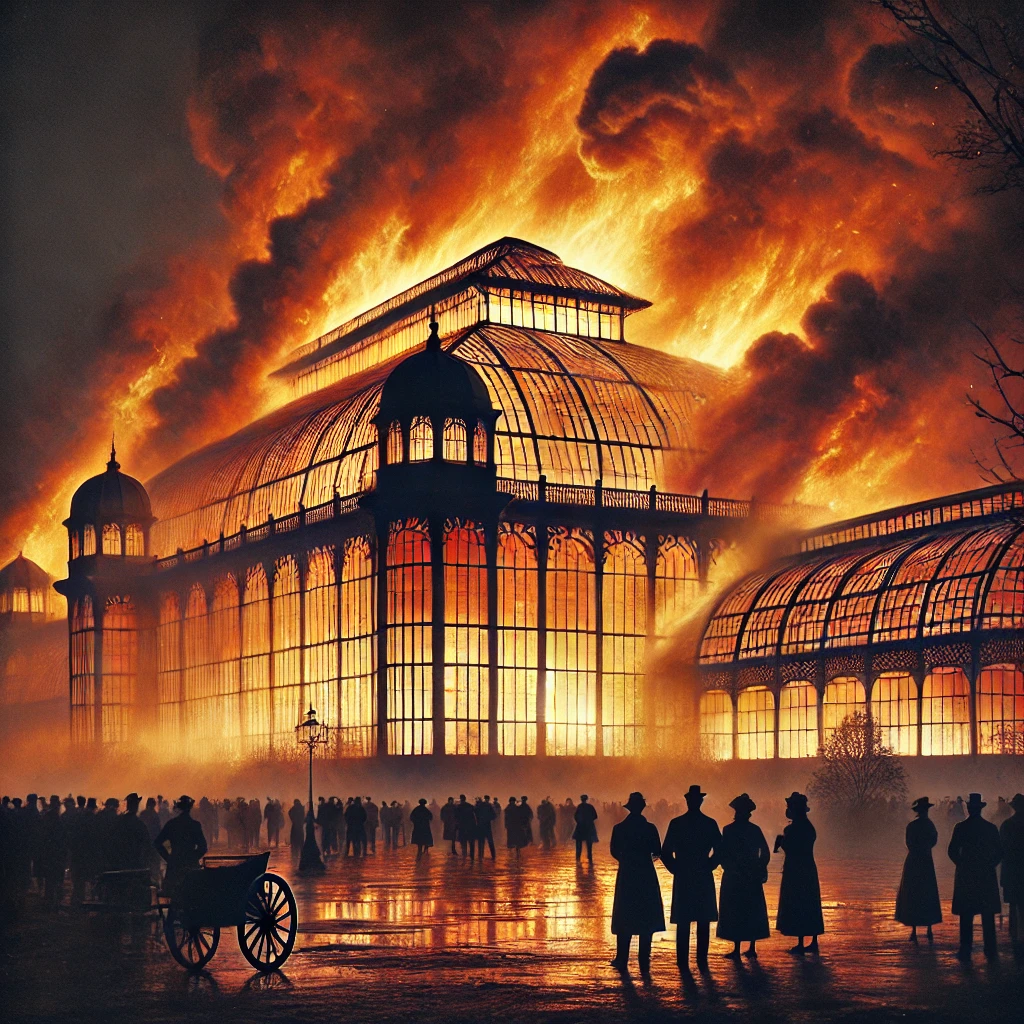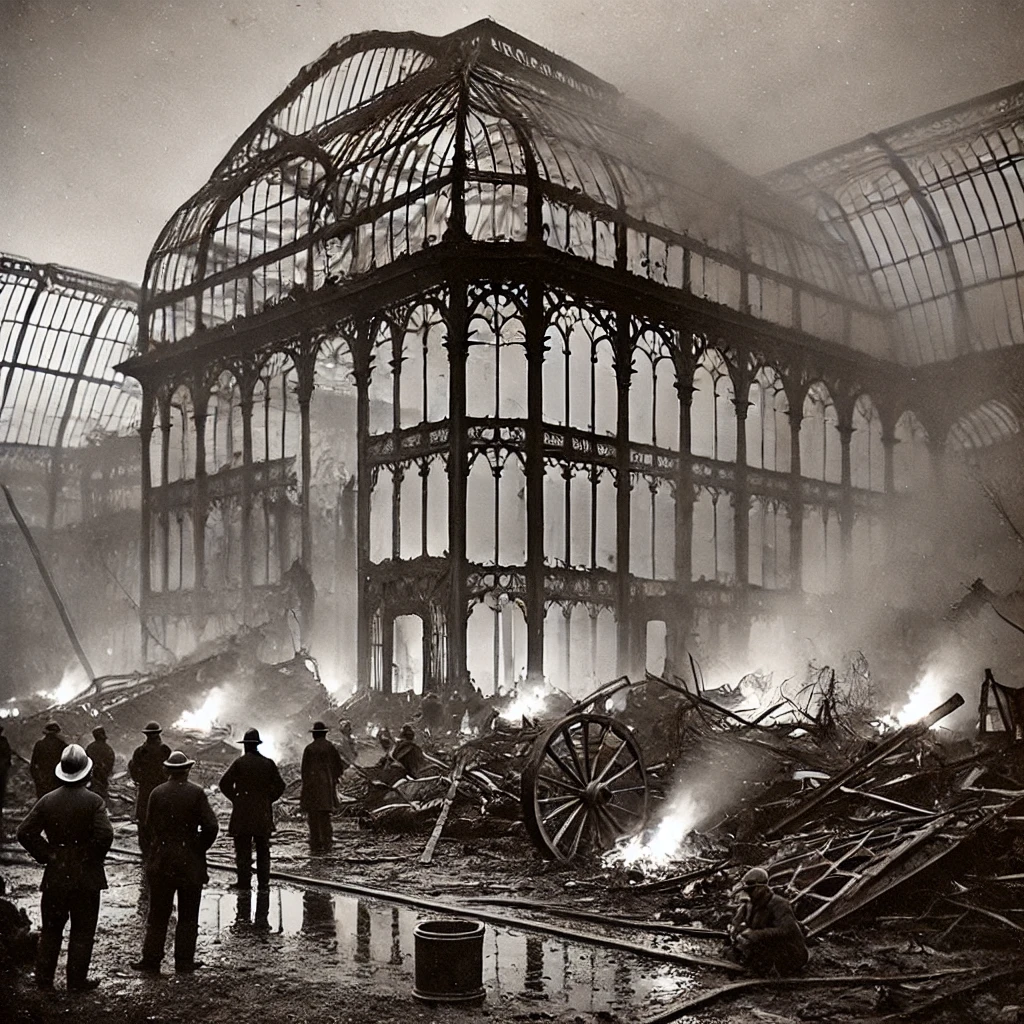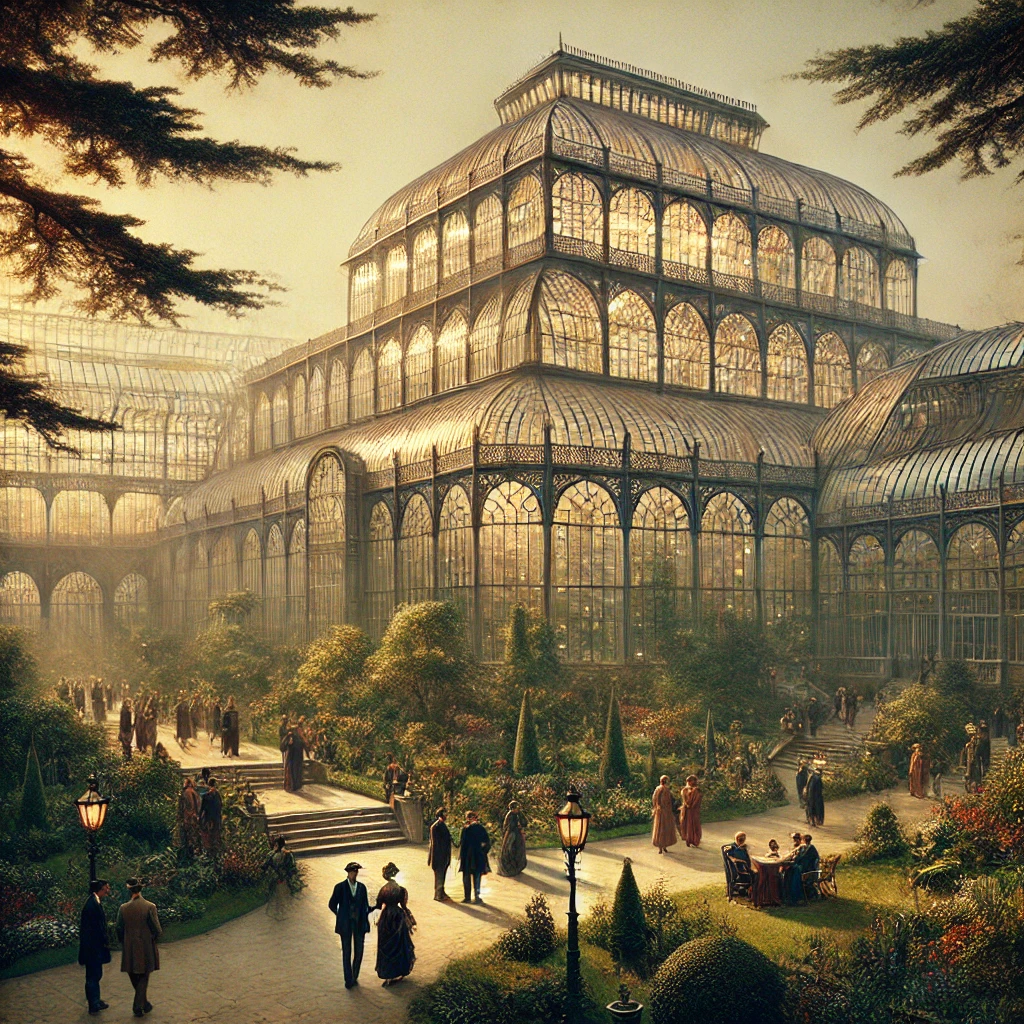The Crystal Palace, an architectural marvel of Victorian England, met its fiery demise on November 30, 1936. Known for its grand glass and iron design, the Crystal Palace was originally built for the Great Exhibition of 1851, symbolizing innovation, industrial progress, and cultural exchange. Its destruction marked the end of an era and left a lasting impact on architecture and public memory.

A Masterpiece of Victorian Ingenuity
The Crystal Palace was conceived by Joseph Paxton and erected in Hyde Park, London, to house the Great Exhibition. Spanning over 990,000 square feet, its modular design used cast iron and glass to create a structure that was both visually stunning and functionally versatile. The Palace showcased exhibits from around the world, including machinery, textiles, and art, embodying the spirit of the Industrial Revolution.
After the exhibition, the Palace was dismantled and reconstructed in Sydenham Hill, where it became a hub for cultural and educational events. This new location featured expanded grounds with fountains, gardens, and attractions, making it a beloved destination for Londoners.

The Tragic Fire of 1936
On the evening of November 30, 1936, flames engulfed the Crystal Palace. Despite the swift response of 88 fire engines and hundreds of firefighters, the building was reduced to rubble within hours. The blaze, visible from miles around, drew a crowd of onlookers, including Winston Churchill, who famously remarked, “This is the end of an age.”
The exact cause of the fire remains unknown, though it is believed to have started in the boiler room. The sheer scale of the conflagration, fueled by the Palace’s wooden floors and expansive glass panels, made it impossible to control. The event not only destroyed a historical landmark but also erased a symbol of Victorian ingenuity.
A Legacy That Endures

Though the Crystal Palace was lost, its influence continues to resonate. The building’s innovative design inspired modern architecture, including early skyscrapers and exhibition halls. Its use of prefabricated components and open interior spaces paved the way for advancements in construction techniques.
The site of the Crystal Palace remains a public park, with some remnants of its grandeur still visible. Efforts to memorialize the Palace include a museum and proposals to rebuild it. The name “Crystal Palace” lives on in the surrounding neighborhood, a football club, and cultural references, cementing its place in collective memory.
The fire that consumed the Crystal Palace serves as a poignant reminder of the fragility of even the most monumental achievements. Yet, its enduring legacy exemplifies how innovation and vision can transcend physical destruction.
